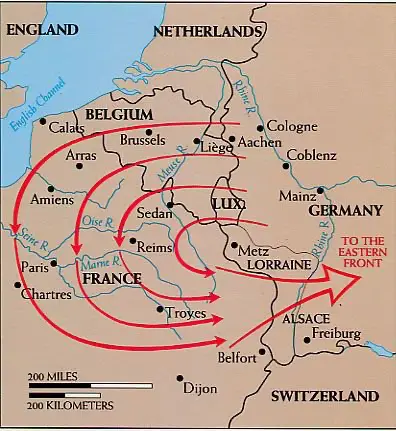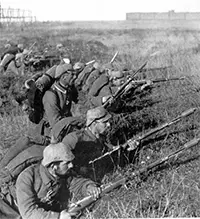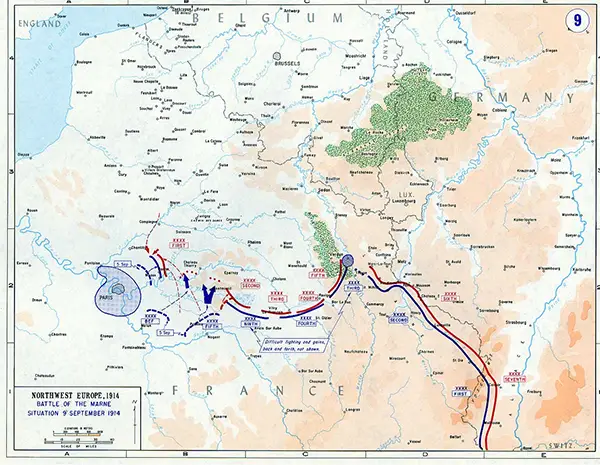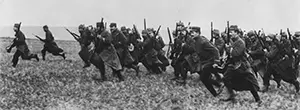The First Battle of the Marne
The First Battle of the Marne was an Allied victory, forcing German forces to retreat and start building trenches. The result saved Paris from German occupation but ultimately led to four years of trench warfare. 
The German high command had deployed a modified version of the Schlieffen Plan, which called for a German invasion of neutral Belgium in order to achieve an envelopment of French troops massed at the France-Germany border. French troops responded by counterattacking, engaging German forces in a series of battles on either side of the border, which came to be known as the Battle of the Frontiers. The main result of all of these battles was an overall French retreat and an overall German advance. German troops continued to press their advantage into France, targeting the capital, Paris. 
The city's defensive forces, led by Gen. Joseph-Simon Gallieni, readied themselves for a siege. The German First Army and Second Army were pressing their advantage and were within just a few miles of their plum target when the First Army commander, Gen. Alexander von Kluck, chose to veer off and attack what he sensed was an easy target. German forces overwhelmed the beleaguered French Fifth Army, but to do so the German First Army had to move away from the German Second Army. The forces of von Kluck's army crossed the Marne River on Sept. 3, 1949, entering the Marne River Valley. Not relishing the prospect of a lengthy siege, Gallieni threw his support behind Chief of the French General Staff Joseph Joffre, who called for a surprise counterattack. Joining in this efforts were members of the British Expeditionary Force (BEF), which had also fought during the Battle of the Frontiers. 
On September 6, the French Sixth Army struck the German First Army, forcing the latter to go even further from the other German force and creating a 30-mile gap between the two. German supply lines were long already, and the series of events hampered communications as well. Even so, the German force nearly claimed victory over the French Sixth Army; at the edge of defeat, the French force enjoyed a 6,000-man-strong contingent of reinforcements delivered to the front by more than 600 taxicabs. (It was the first automotive troop transport in history, many sources say.) 
Into the gap between the two German armies poured the French Fifth Army and the BEF, targeting Karl von Bülow's German Second Army. Both German forces were put on the defensive by the sudden counterattacks, and their response on September 9 was to retreat. They joined again on the border of the Aisne River, some 40 miles to the northeast of their previous position. Seeing what looked like a bright and shining triumph turn into a relinquishing of the field of battle led the German Chief of the German Staff Helmuth von Moltke to have a nervous breakdown. His subordinates tended to him even as they directed the retreat. A rainstorm on September 11 added to the difficulty. The following day is the official end of the battle. In all, 2 million soldiers fought in the First Battle of the Marne. Estimates of casualties (killed, wounded, captured or otherwise lost) vary widely by source. Many sources say that the number of French casualties was roughtly equal to the number of German casualties, with the BEF losing significantly less, reflecting the smaller U.K. presence. Some casualty estimates have the French and German forces losing soldiers in the tens of thousands; the higher estimates put those figures upwards of 200,000. German forces set about digging trenches, which would dominate the landscape for the duration of the war in many places. Eventually, French forces would dig their own trenches. Elsewhere, however, the two sides were still clashing, fighting in a stand-up battle along the Aisne River and also racing to the sea. The former, the First Battle of the Aisne, took place admidst the German attempts to solidify their retreated position. Neither side gained much out of a series of attacks and counterattacks. As for the Race to the Sea, that involved a much lengthier pursuit. |
|
Social Studies for Kids
copyright 2002–2024
David White




